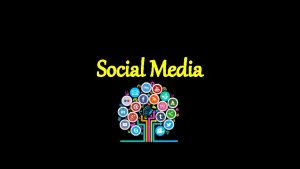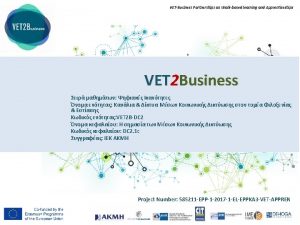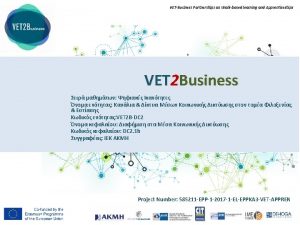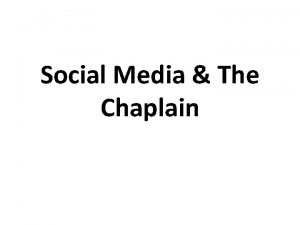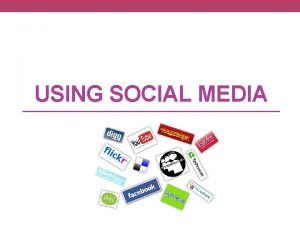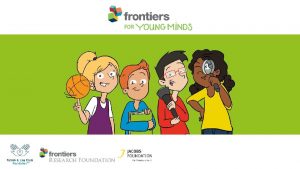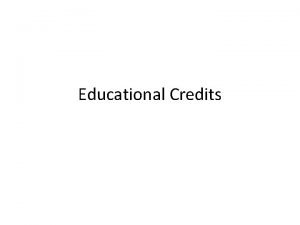SOCIAL MEDIA An Educational Tool SOCIAL MEDIA FOR












- Slides: 12

SOCIAL MEDIA An Educational Tool?

SOCIAL MEDIA FOR EDUCATION Facebook Tweet Lore Ning Edmodo Demo http: //www. youtube. com/watch_popup? v=4 -KBwri. CO-Q

FACEBOOK Facebook was launched in February 2004 by Mark Zuckerberg and his college roommates and fellow Harvard University students to facilitate social interaction exclusively among college students. Currently Facebook has over one billion active users with age 13 or more (Davies, 2012), and is available for anyone with a valid email address. More than half of them gain access to it through mobile phones. Facebook is a social networking service that builds an online community where people can build their personal profiles, join networks, share photos and activities, and conduct both online and offline communication

FACEBOOK FEATURES NETWORK high school or university, a geographical area or city, or a company PROFILE Personal information, location, accept/reject, privacy SHARE/UPDATES Photo, link, tag, news, comment

ADVANTAGE 1 -SOCIAL SUPPORT INTERACTION-intriguing possibility that by enhancing social interactions with and among students through the use of an SNS RELATIONAL MENTORING-growth in mentality occurs when both people experience increased energy and well-being, potential to take action increased knowledge of self and other, a boost to self-esteem, and an interest in more connection EMOTIONAL SUPPORT-help student tide over emotion downs by providing instant communication with peers, parents, or teachers online and allow them to vent negative emotions before it is too late

ADVANTAGE 2 -COLLABORATION TECH INFRASTRACTURE-Students can easily follow announcements about classes and courses, departments or schools, homework and assignments from teachers, informing about resources and links related to courses DEEPER CONVERSATION-extension of discussion and sharing time through Facebook group helps develop higher order thinking and discussion in a deeper level ALUMNI CONNECTION-Facebook can be used to track down alumni for research purpose

ADVANTAGE 3 -BACKSTAGE PROFILING STUDENT PROFILING-Facebook provides a “backstage” (Selwyn, 2009) for learners and teachers to complement the identity (Tiffany A. Pempek, 2009) they assume on a traditional “front-stage” in a traditional education environment. teachers will be able to motivate students better according to their personality and interests TEACHER CREDIBILITY BOOST-, the credibility of a teacher also grows as he or she shares more personal information and activities with students on Facebook (Hew, 2011).

DISADVANTAGES SOCIAL MOST-Facebook is used majorly for social rather than academic work. Even students take part in discussions about their assignments, lectures, and study notes or share information about research resources, they engage in photo posting, activity sharing, and wall posts to stay in touch with friends (Davies, 2012) and family (Gabriela Grossecka, 2011) ENTERTAINMENG MOST-most content posted on facebook are mostly entertaining rather than educational. Students may even times found inappropriate materials through vast file/picture/content sharing across the platform FACULTY RESISTANCE-students are much more likely than faculty to use Facebook and are significantly more open to the possibility of using Facebook and similar technologies to support classroom work. Faculty members are more likely to use more “traditional” technologies such as email. (M. D. Roblyer, 2010) CYBER BULLYING-cyber bullying is actually more dangerous in a sense that it can be spread violently and there is no way to stop it once it starts

Counterargument SOCIAL MOST- However, just because of its social characteristics, facebook can be a great infrastructure for large scale of collaboration between students. ENTERTAINMENG MOST- Entertainment is essential for good learning since it is a motivation facilitator. With moderate control of the content, certain entertainment motivates student to learn. FACULTY RESISTANCE- Faculty resist it majorly because lack of training for appropriate and effective use of Facebook as a tool for social learning. With good training, faculty might experience initial resistance, but most likely they will start to accept it. CYBER BULLYING-it is only an extension from the physical world. Without stopping bullying in real world, it is hard to stop it in the virtual one.

COSTS? Relative costs of Facebook are mostly free. Most of facebook features that may contribute to learning, wall posts, file sharing, groups, to name just a few, are an inherent feature of the platform. Certain entertaining apps, such as gaming, may put a charge on the users. After all, if Facebook can be successfully implemented in a traditional education setting, the costs are negligible.

Suggestions For younger children A new Facebook-Educational online environment For older children More effective use of current features with teacher monitoring

Bibiliography Amerson, R. (2010). Facebook: A tool for nursing education research. Journal of Nurse Education , 141 -150. Davies, J. (2012). Facework on Facebook as a new literacy practice. Computers & Education , 59, 19 -29. Filiz Tiryakioglu, F. E. (2011). Use of social networks as an education tool. Comtemporary Educational Technology , 1 (1), 135 -150. Gabriela Grossecka, R. B. (2011). Dear teacher, what should I write on my wall? A case study on academic uses of Facebook. Procedia Social and Behavioral Sciences , 15, 1425– 1430. Grace Chi En Kwan, M. M. (2013). Facebook bullying: An extension of battles in school. Computers in Human Behavior , 29, 16 -25. Herbert Shiu, J. F. (2012). Facebook – Education with Social Networking Websites for Teaching and Learning. Computer & Education , 44, 59 -70. Hew, K. F. (2011). Students’ and teachers’ use of Facebook. Computers in Human Behavior , 27, 662 -676. Kanghui Baek, A. H. (2011). The links that bind: Uncovering novel motivations for linking on Facebook. Computers in Human Behavior , 27, 2243 -2248. M. D. Roblyer, M. M. (2010). Findings on Facebook in higher education: A comparison of college faculty and student uses and perceptions of social networking sites. Internet and Higher Education , 134 -140. Peng-Chun Lin, H. -T. H. -M. -E. (2013). Analyzing knowledge dimensions and cognitive process of a project-based online discussion instructional activity using Facebook in an adult and continuing education course. Computers & Education , 60, 110 -121. Sacide Güzin Mazman, Y. K. (2010). Modeling educational usage of Facebook. Computers & Education , 55, 444 -453. Stefan Hrastinski, N. M. (2012). How are campus students using social media to support their studies? An explorative interview study. Educ Inf Technol , 17, 451– 464. Tiffany A. Pempek, Y. A. (2009). College students' social networking experiences on Facebook. Journal of Applied Developmental Psychology , 30, 227 -238.













